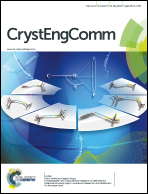Magnetic-field-assisted synthesis of magnetite nanoparticles via thermal decomposition and their hyperthermia properties†
Abstract
In this work, an external magnetic field was utilized during the thermal decomposition process to manipulate the shapes, surfaces and magnetic properties of Fe3O4 nanoparticles. The applied magnetic field of 500 Oe induced the formation of uniform Fe3O4 nanocubes of 250 nm, in sharp contrast to the nanocuboctahedra formed when no magnetic field was applied. The size of the Fe3O4 nanoparticles was also effectively controlled by adjusting the pre-heating time of the reaction precursor. It is noticed that the magnetic field promotes the transformation of Fe3O4 nanocuboctahedra to nanocubes and has no effect on nanooctahedra. Furthermore, first-principles calculation was employed to understand the interaction between the magnetic field and the synthesized nanoparticles by studying the surface magnetic anisotropy of Fe3O4 (001) and (111) surfaces. Moreover, the Fe3O4 nanocubes and nanocuboctahedra were coated with chitosan and were well dispersed in water for hyperthermia measurement. The intrinsic loss power (ILP) of the Fe3O4 nanocubes (1.71 nH m2 kg−1) was 56% higher than that of the nanocuboctahedra (1.09 nH m2 kg−1) inferring a surface magnetic effect on hyperthermia performance.



 Please wait while we load your content...
Please wait while we load your content...